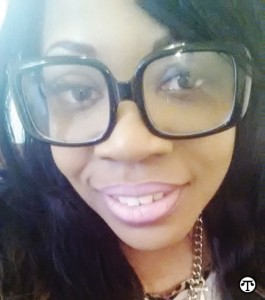 (NAPS)—You can’t always predict when the opportunity will arise to be a hero. Just ask Loresa Wright. She joined the Be The Match Registry as a potential bone marrow donor in hopes of being a match for a colleague in need of a transplant. She had no way of knowing it would lead to saving a stranger’s life three years later.
(NAPS)—You can’t always predict when the opportunity will arise to be a hero. Just ask Loresa Wright. She joined the Be The Match Registry as a potential bone marrow donor in hopes of being a match for a colleague in need of a transplant. She had no way of knowing it would lead to saving a stranger’s life three years later.
Joining The Registry
Wright, a 36-year-old mother of two from the Bronx, N.Y., is known for her caring and nurturing spirit. While working at the United Way of New York City, she had already contributed to an organization focused on helping others every day.
Her colleague was diagnosed with acute myeloid leukemia, one of 70 different diseases treatable by a bone marrow transplant. The organization held a bone marrow donor registry drive, not only to find a donor, but to support efforts to raise awareness for the need for diverse bone marrow donors on the registry.
The need is significant. Patients are most likely to find a matching donor who shares their same race or ethnicity. African American patients looking for donors have a 66 to 76 percent chance of finding a matched, available donor on the registry, compared to 97 percent for Caucasian patients.
Wright immediately knew she wanted to join. “I knew I should move forward because it could be the only chance for someone else—and knowing that it’s harder to find a donor match for African Americans also inspired me,” she said.
The Donor Experience
While Wright ultimately was not a match for her colleague, she remained committed to serving as a donor if needed. She received the call in July 2012: She was a match for a 45-year-old woman from Philadelphia with acute myelogenous leukemia. Like Wright, her match was a mother.
“I felt nervous and anxious, but it was also exciting,” said Wright. “There was no hesitation—given how rare it is for African Americans to find a match, I knew that if there was an opportunity to help, that’s what I was going to do.”
With the support of family, friends, co-workers and her donor center coordinator, she prepared to donate, describing her eventual donation day as “pretty simple.” After the donation, Wright rested and recovered quickly, experiencing no side effects. She also had no regrets.
“I would do it again! It wasn’t hard—it was rewarding,” said Wright. “If anyone has the opportunity to be a donor, he or she should consider doing so. It’s not a horrible experience, and the payoff is great. I am able to say that I’ve given life to two children and was able to save a life as a donor—not many people can say that!”
You Can Help
One of the best ways to help is to register as a donor and stay committed. In particular, having more African American donors in the registry will help increase the chances for patients to receive a potentially lifesaving cure.
Learn More
For more information, visit BeTheMatch.org or call (800) MARROW-2.
Cynthia Lopinto
Latest posts by Cynthia Lopinto (see all)
- Honey Chocolate–Covered Pretzels - April 3, 2018
- True Colors - April 3, 2018
- Spring Cleaning…You’ve Gotta Be Kidding - April 2, 2018
- Should You Stay In Your Home Or Move During Retirement? - April 2, 2018
- Hawaiian Plants For Good Health - April 2, 2018
 Home Front Magazine A Publication for Seniors
Home Front Magazine A Publication for Seniors

